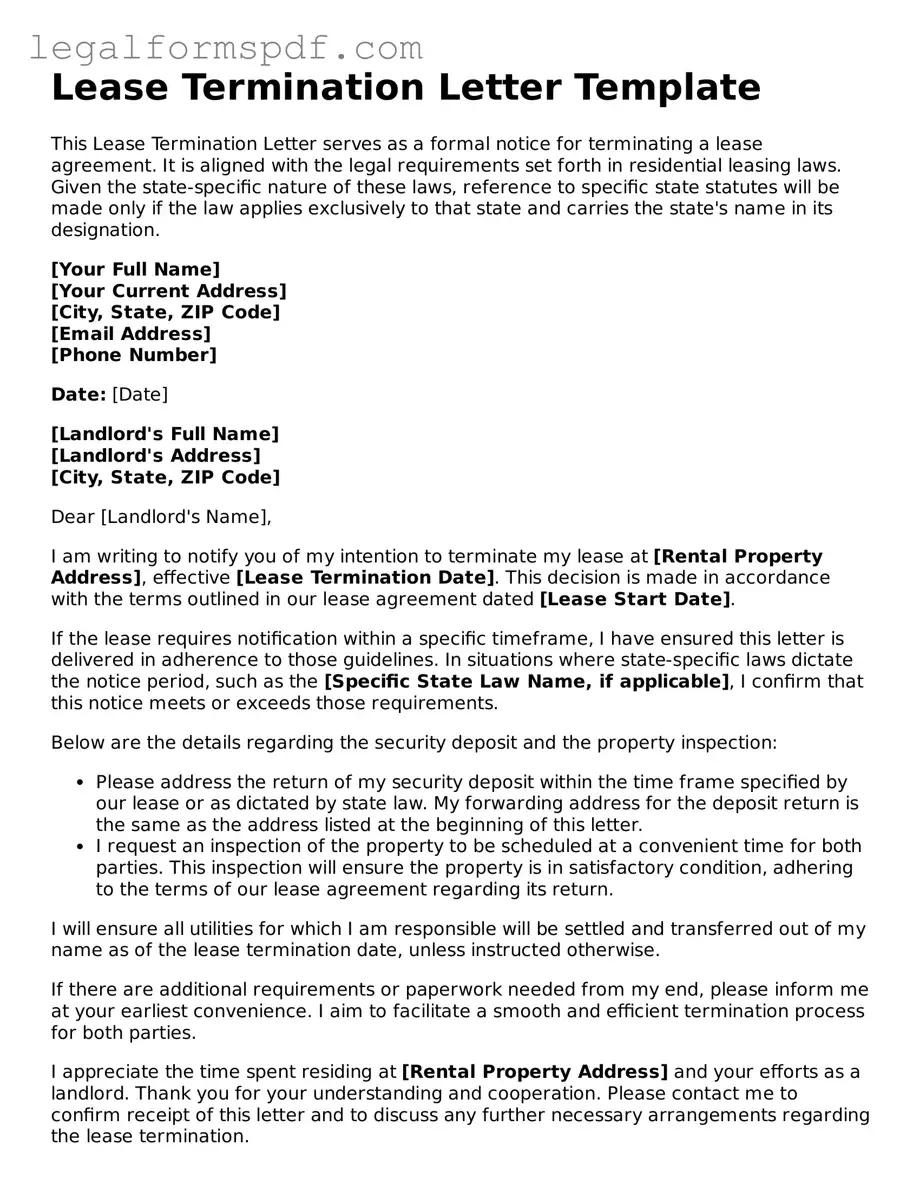What is a Lease Termination Letter?
A Lease Termination Letter is a formal notification from the tenant to the landlord or vice versa, indicating the desire to end the lease agreement before the original term has concluded. This document is essential in providing a clear and written record of the party’s intention to vacate the property or terminate the lease, ensuring that all actions are conducted within the bounds of the law and agreed-upon lease terms.
When should a Lease Termination Letter be sent?
Timing for sending a Lease Termination Letter typically depends on the terms outlined in the original lease agreement. Generally, it’s advised to send the letter well in advance of the desired termination date, usually 30 to 60 days, as most leases require this amount of notice. However, reviewing the lease agreement for the specific notice period required is important to comply fully with its terms.
What should be included in a Lease Termination Letter?
A Lease Termination Letter should clearly state the intention to terminate the lease and include important details such as the effective date of termination, a request for a walk-through inspection, the forwarding address for the return of the security deposit, and a brief explanation for the termination, if applicable. Additionally, tenants may want to refer to specific clauses in the lease that allow for termination under their circumstances.
Is a Lease Termination Letter legally binding?
Yes, a Lease Termination Letter, when filled out correctly and delivered according to the lease agreement’s conditions, serves as a legally binding document that signifies the intent of either party to conclude the leasing agreement. It is an essential part of the process to ensure both parties are aware of and agree on the terms of the lease ending.
How can a Lease Termination Letter protect me?
By clearly stating your intentions and adhering to the terms of your lease agreement, a Lease Termination Letter protects both the tenant and the landlord. For tenants, it serves as evidence of your compliance with the lease’s termination requirements, potentially avoiding financial penalties. For landlords, it provides a clear timeline for when the property will be vacated, allowing for re-leasing activities to begin. It is a critical document for resolving the termination process amicably and legally.
Can I email a Lease Termination Letter, or must it be delivered in person?
The delivery method of a Lease Termination Letter can vary based on the terms of the lease agreement. While some agreements may specify that notices must be delivered in writing and through traditional mail, others may permit electronic delivery such as email. It is important to review the lease agreement to ensure the letter is delivered in compliance with its terms. Regardless of the method, obtaining confirmation of receipt is crucial for ensuring that the notice has been received and acknowledged.
